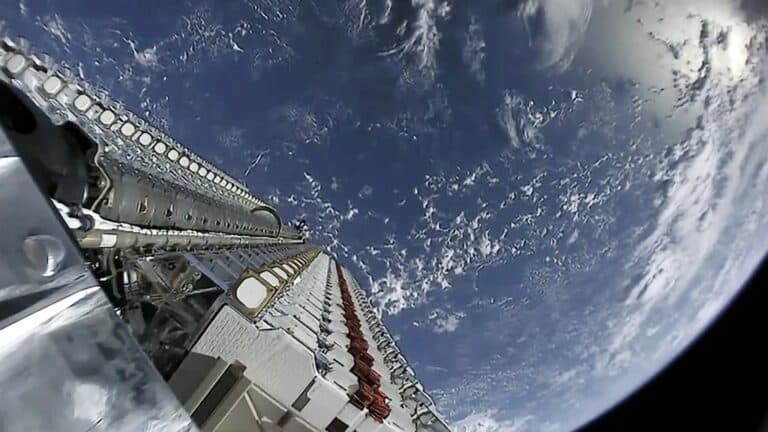The new satellites deliver 4 times the capacity of the first-gen models.
SpaceX is about to deploy their first “V2 Mini” satellites, according to a report in Ars Technica. The new satellites are designed to be a remedy for the problem of Starlink speeds slowing due to a growing “capacity crunch“, the report says.
The new V2 Mini satellites will provide four times more per-satellite capacity than earlier versions.
A new generation of Starlink satellites
The V2 Minis and the larger V2 belong to Starlink’s second-generation satellite program. The larger V2s are designed to be launched into orbit aboard the SpaceX Starship, however that vehicle is not yet ready to launch, Ars Technica says. The V2 Minis, however, are “slimmed-down” versions that can be deployed from the Falcon 9 rocket.
“The V2 Minis are smaller than the V2 satellites, but don’t let the name fool you”, SpaceX said in a statement given to Ars Technica. “The V2 Minis include more advanced phased array antennas and the use of E-band for backhaul, which will enable Starlink to provide ~4x more capacity per satellite than earlier iterations”.
The SpaceX first-generation satellites were designed for an aggregate downlink capacity of 17 to 23Gbps per satellite. Ars Technica asked the company for details on the V2 Mini’s per-satellite capacity and “whether current user terminals installed at customers’ homes can take full advantage of the speed boosts”. SpaceX, however, did not specify the amount of data that each V2 Mini satellite can provide at this time.
Sending signals directly to mobile phones
The Federal Communications Commission recently gave SpaceX approval to launch 7,500 of the 30,000 planned second-generation satellites. Ars Technica said that a SpaceX Falcon 9 launch “tentatively scheduled” for February 27 would put 21 V2 Minis into orbit.
Once Starship is launch ready, the V2 satellites, which are larger than the V2 Minis, will be able to send signals directly to cell phones. This is a capability that’ll be used by SpaceX and T-Mobile in a partnership the two companies announced in August 2022.
